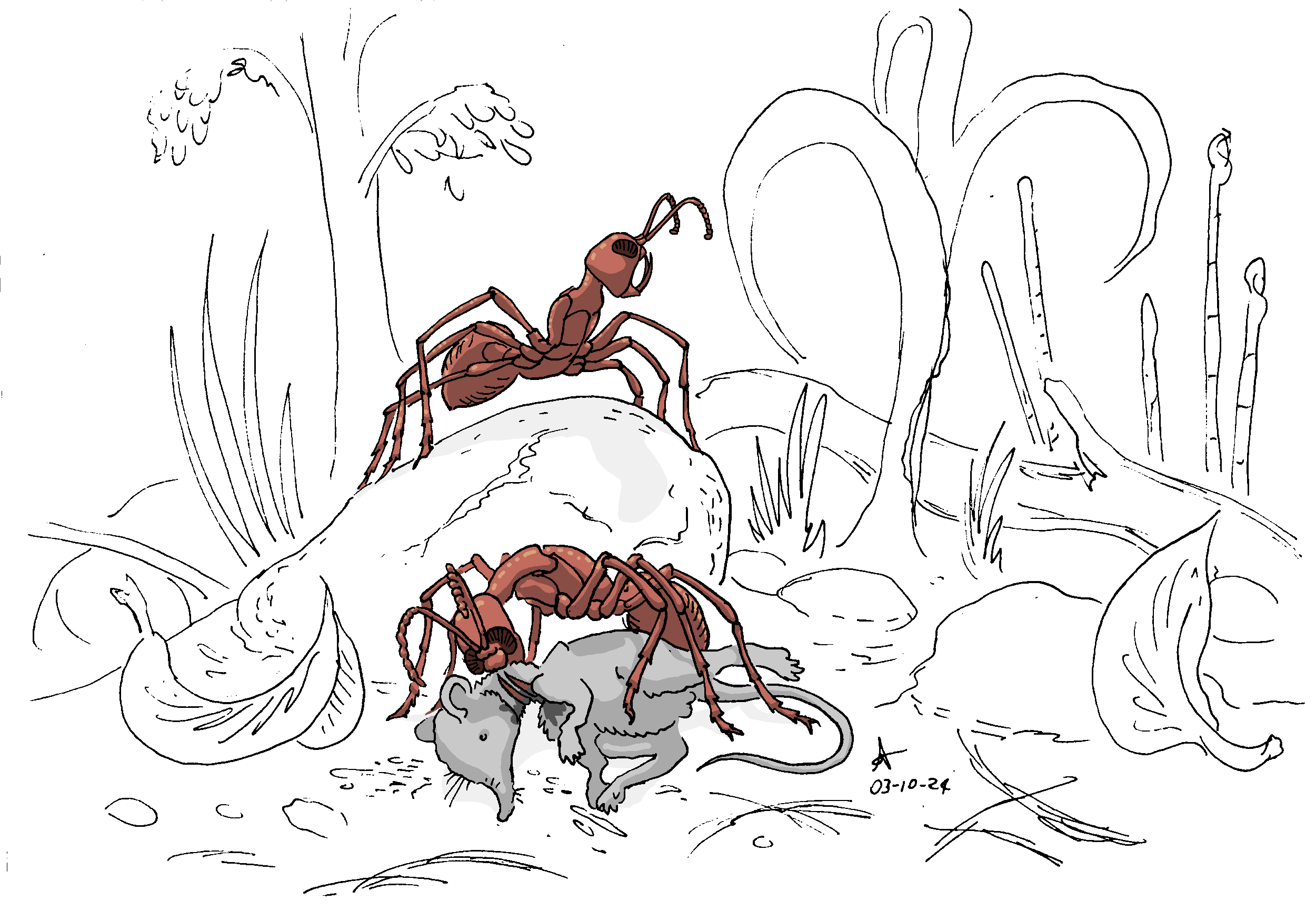To a human observer, jenekumila would certainly be recognizable as an ant; although a fearsome one, with its six centimeters of size, rivalling with the great Titanomyrma of Earth's past. A closer look, however, would reveal a stranger anatomy. The jaws do not close horizontally against each other, as is the case in most insects, but vertically against a sloping face, giving the head the appearance of a crab's pincer. Minute setae grow on the face plates, which upon contact trigger the closure of the jaw, faster than the eye could follow. These creatures belong to the Haidomyrmecinae family, long extinct from Earth, though found abundantly in the Burmese amber troves that formed in the Late Cretaceous. They split off at the very dawn of ant evolution, when ants were simply burrowing wasps among which some individuals bore wingless sterile children to assist with raising their siblings. The familiar arrangement with queens and workers is there to some degree, but the colonies are small – little more than large families – there are no elaborate underground nests, and the colony members all hunt on their own. Something at which they are quite successful, with their size and weapons. Their favorite preys are shrew-like mammals and rhynchocephalian pseudo-lizards, whose enck they can easily snap as soon as it is in reach of their jaws.
(image and description courtesy of Concavenator)
